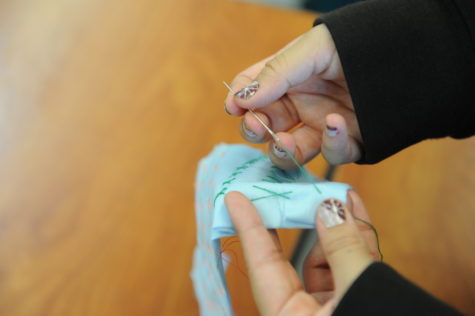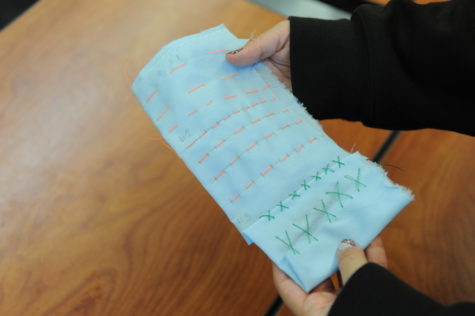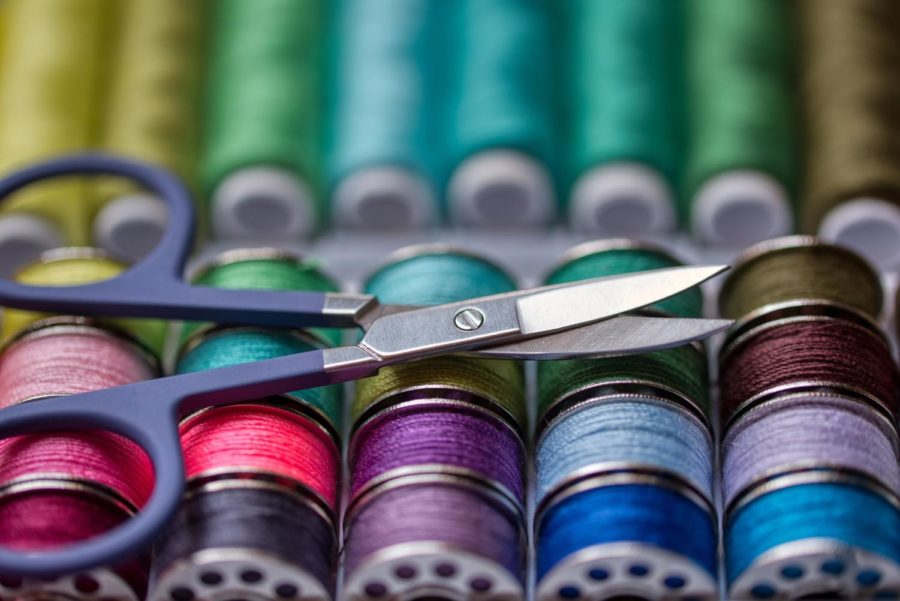The Art of Learning
Over time, the ways in which humans acquire life skills, such as cooking, cleaning, and sewing, have changed. We’ve acquired a myriad of methods to learning from others, from books, and now, with technology.
“Learning never exhausts the mind,” said Leonardo da Vinci.
As the time to leave the nest approaches, the list of ‘how to be an adult’ grows longer. Some may think about how they will buy and maintain their own space. Others might contemplate job ventures to sustain their new life. The closer I get to adulthood, the more I realize how little I seem to know about basic skills despite their importance in daily living. Most of my knowledge is connected to my studies at school and the skills I need to use to manage my extracurricular activities, but none that can feed me or mend my clothing.
Instead of stopping at learning some skills alone, I chose to compare traditional and modern ways of acquiring skills.
Over the past month and a half, I compared learning methods for two of the most essential life skills: sewing and cooking. Nowadays, anyone with internet access can look up a tutorial, article, or a video for nearly anything they need to understand how to make sense of, but it was not like this a few decades ago. I used the internet to learn basic stitches and techniques, but I did not be use the internet at all when mastering how to cook. Instead, I consulted with others and used cookbooks.

The first week went rather slowly. Since I practiced hand-sewing first, I ordered a sewing kit, and my mother bought me some fabric. After the materials had arrived, I immediately sat down to admire the multitude of colored threads and needles, especially the tomato pin cushion. I had no idea where to start, but I knew that I couldn’t start with a project right away.
To embark on my sewing journey, I collected several YouTube videos because I find visuals easier to understand compared to written instructions paired with photos. Of the three colored fabrics I had gotten, each a yard, I decided to cut a piece of one of the fabrics to try out my first stitch.
As I worked on learning how to sew, I encountered a few obstacles. How do I properly thread a needle? How do I tie off a stitch? Is the threat knotted around the needle or the other end of the thread? Luckily, the internet came to my rescue. A simple Google search answered my questions instantaneously and eased the frustrations I had. I had no idea how to properly thread a needle. I always assumed that the thread would be knotted around the needle, not with the other end of the thread. I also had no clue how to tie off a stitch.
When learning how to sew, my laptop became my teacher, my savior and my companion. My laptop was a haven of readily accessible information whereas a book or knowledgeable person would require a much longer search. With the internet at my fingertips, the learning process was made cheaper because I didn’t need to go outside and make any additional purchases other than the materials with which to sew.
A fundamental aspect about acquiring a skill is allocating time to sit down and actually practice. Personally, this was the most difficult part to accomplish, due to the time I had to allocate for schoolwork. An absence of leisure time forced my progress to be slower than expected.
Fortunately, I managed to set aside to practice simple stitches. I soon realized that the internet was a daunting place when looking for information because of the abundance of options. It was hard to refrain from getting too ambitious with my stitches, but I found a video with six easy stitches and stuck with that one.
The following week was all about practice. Soon enough, the fabric I had cut earlier was filled with stitches. Most of them were tilted or unevenly spaced, but I figured out a few additional things to add on to my preliminary knowledge from the videos I watched. Approaching the same stitches with the same method was not working, I had to try a different technique. So, I drew a straight line along the place I would practice the stitch to make sure they wouldn’t go diagonally.
As for cooking, finding time to grasp this skill was even harder than sewing. Instead of relying on the internet, as I had done with sewing, I chose to depend on my grandmother and a cookbook to learn. Spending time on the internet to learn is far different than finding time to learn from someone else since you would have to take both schedules into account.
Staying away from the internet became increasingly difficult, as I didn’t have a cookbook available, and it was taking a while to find a time when my grandmother and I were both free. Using the easy way out was incredibly tempting, especially since it had been the primary resource for sewing and had so far proved to be quite successful.

The third week was the most successful one because it was winter break. I finally had time to practice both skills and learn from my grandmother.
I practiced three different stitches and successfully sewed up the hole in my sweater. When I was younger, I never thought I would want to sew; it had seemed tedious to me, and I was afraid of accidentally poking myself with the needle. However, after seeing others make beautiful clothing and gowns, I felt inspired to learn the craft as well and I knew it would come in handy for quick fixes like stitching up a hole in a piece of clothing.
After learning the fundamentals of hand-sewing on my own, I turned to others to discuss cooking and baking.
“Baking started with my love for food, which has always been a thing. I love eating, so it only makes perfect sense to learn how to make good food,” said Janine Choy ’24.
I finally found the opportunity to speak with my grandmother about her cooking journey. She started learning to cook at the age of 19 and relied on her kind neighbor to teach her. I asked her how long it took her to learn to cook to get a rough estimate for what I might expect on my own journey.
“O fue mucho tiempo. Creo que un año…Y poco a poco en el camino va encontrando cosas más distintas. Y ahora usted por YouTube la encuentra todo,” she said. [Translation: “Oh, it was a long time. I think it was a year…and little by little one finds more distinct things along the way. And now one can find everything on YouTube.”]
While she was learning to cook, the internet was not available at all. Some may have opted for cookbooks or cooking classes, but my grandmother did not.
“Pues no, porque uno en ese entonces no, no había así cosas de culinaria, porque uno aprendiera en el camino con gente,” she said. [Translation: ‘Well no, because at the time there weren’t many culinary things because one would learn on the way with other people.’]
Even now, cooking classes are not accessible to everyone. But fortunately, I grew up with a grandmother who had friends that hosted cooking classes, and I was first exposed to the skill at a very young age. Unfortunately for me, that skill didn’t stick. But I am more than willing to learn from my grandmother as she had learned from her neighbor.
Learning from others has been one of the greatest methods to obtain a new skill that continues in many households and communities even today.
“I learned how to cook when my mom would ask for my help in the kitchen when I was eight or nine years old. My family are better chefs than bakers. So when I first started baking, I was using boxed cake mixes,” said Choy.
Family cooks are an amazing resource from whom to learn, especially in carrying out delicious family traditions for the next generation of cooks and bakers to enjoy.
Relatives are not the only people one can learn from though. As Elsa Chang ‘24 said, “I actually learned how to bake during my ninth grade year at Bronx Science, during Baking club meetings on Zoom. I felt like I was back in 2015 making homemade slime. Also, my cookies turned out horribly, but I was able to understand what recipes I preferred, and I learned certain methods of baking throughout that year from the club.”
Learning is versatile and there are several approaches to try out. Every individual learns differently. From my experiment specifically, I found that learning on my own worked best for me. But I also acknowledge that some skill sets require the assistance of others, and that just makes the experience all the more worthwhile.
Over the past month and a half, I compared learning methods for two of the most essential life skills: sewing and cooking.
Ruby Moran is a Copy Chief for ‘The Science Survey.’ She believes that journalistic writing is essential for educating the public on crucial issues...

